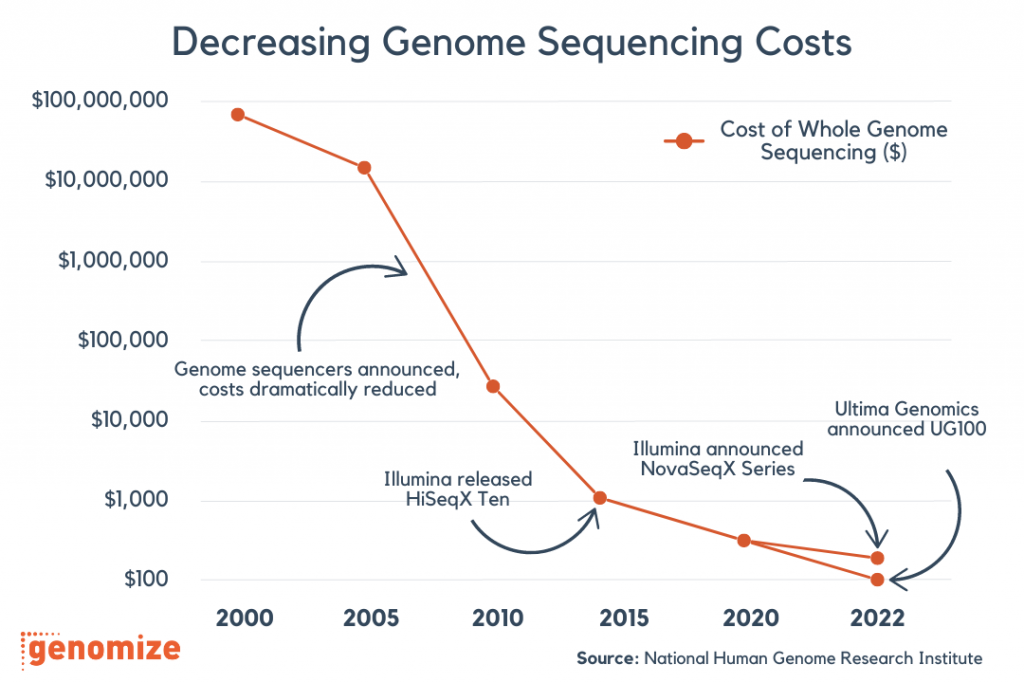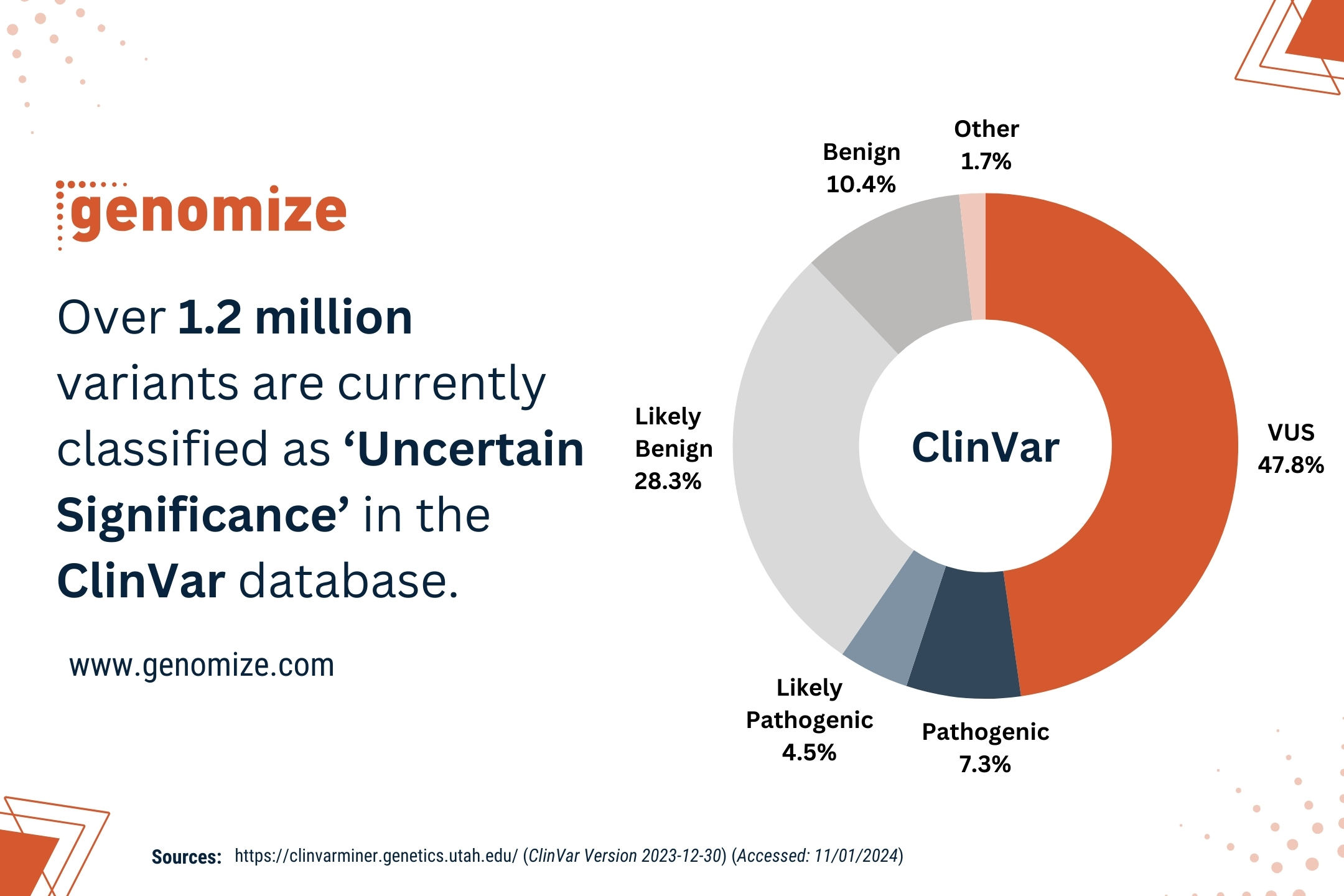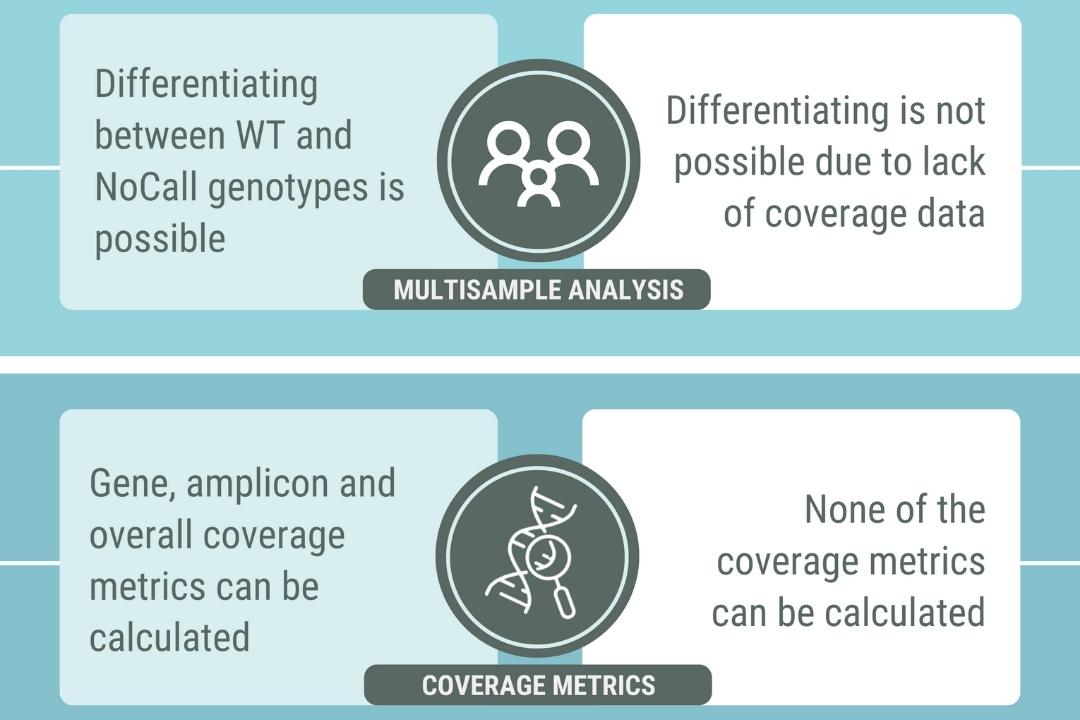The rapidly decreasing genome sequencing costs have been a major driving force in transforming our understanding of clinical genetics, revolutionizing the diagnosis and treatment of rare diseases, and paving the way for precision medicine. As sequencing technologies continue to evolve and become more affordable, a new era of personalized medicine is emerging, promising to deliver tailored treatments and improved outcomes for millions of patients with rare genetic disorders. In this article, we explore the history of decreasing genome sequencing costs, the significance of this trend in clinical genetics, and the latest advancements in sequencing technology that are making genome sequencing more accessible and affordable than ever before.
A brief history of decreasing genome sequencing costs
The journey towards affordable genome sequencing began with the completion of the Human Genome Project in 2003. This monumental achievement, which took over a decade and cost nearly $3 billion, laid the foundation for rapid advancements in sequencing technology [1]. Over the past two decades, the cost of sequencing a human genome has experienced an exponential decline [2]. This remarkable progress is the result of continuous innovation in the field of genomics, driven by the development of next-generation sequencing (NGS) platforms, improvements in computational tools, and increased competition among sequencing companies.
Why is genome sequencing cost going down?
Genome sequencing costs are continuously decreasing due to technological advancements, market competition, economic scalability, and new players with innovative approaches.
Most significant factor for cost reduction is the intense competition among the players in the sequencing technology market. For instance, Illumina, has been pushing the boundaries of affordability. When the company introduced HiSeqX Ten in 2014, they significantly reduced the cost to a mere $1,000 [3]. Just after 8 years, in late 2022, the same company introduced the NovaSeqX series, which aims to reduce the cost of sequencing a human genome to just $200. According to Francis de Souza, CEO of Illumina, a more advanced model could sequence up to 20,000 genomes per year, as opposed to the current machine’s capacity of about 7,500 genomes, providing a performance upgrade on top of the significant cost reduction [4].
Francis de Souza highlights the economic scalability of the sequencing market as another factor contributing to the decreasing cost of genome sequencing. As the demand for sequencing services has grown, companies have been able to produce machines with greater sequencing volumes and equipment and reagents in larger quantities, leading to lower per-sample costs. This has allowed healthcare providers to offer their services at more affordable prices, ultimately benefiting end-users in the clinical genetics and research fields.
New players in the sequencing technology market are also contributing to significant cost reductions. For example in 2022, a promising and rapidly-growing startup, Ultima Genomics, also claimed that their innovative sequencing technology could bring the price down to approximately $100 per genome [5] (Figure 1). Besides the market competition and economic scalability, new players in the market and technological advancements have also put pressure on established companies like Illumina, Qiagen, and MGI to continue refining their technology and pricing.

Figure 1: Decreasing whole genome sequencing costs between 2000 and 2022. (Source: NHGRI)
The importance of the decreasing genome sequencing costs
The implications of affordable genome sequencing are far-reaching, particularly in clinical genetics, developing novel treatments, and precision medicine. Lower sequencing costs enable clinicians to incorporate genetic testing into routine patient care, leading to earlier and more accurate diagnoses, as well as personalized treatment plans. This shift has the potential to significantly improve the quality of life for patients with rare genetic disorders, many of whom have historically faced a lengthy and often frustrating diagnostic odyssey.
As the cost of sequencing continues to decrease, it has led to a surge of genomics research. This has resulted in a wealth of valuable data that can be utilized to gain a deeper understanding of the molecular basis of rare diseases, ultimately leading to the development of new therapeutic approaches.
Conclusion
In conclusion, the decreasing cost of genome sequencing is paving the way for affordable genomics, which is having a profound impact on clinical genetics, precision medicine, and preventive healthcare applications. The new wave of precision medicine promises to revolutionize the diagnosis and treatment of rare diseases, improving the lives of patients worldwide. As innovative companies drive down sequencing costs, we can expect even greater breakthroughs in genomics research. At Genomize, we are committed to being a part of this genomic revolution by providing high-quality and accessible NGS data analysis solutions, believing that everyone should have access to the benefits of genetic testing, regardless of financial limitations.
References
1. https://www.genome.gov/about-genomics/educational-resources/fact-sheets/human-genome-project# (Accessed: 27/04/2023)
2. https://www.genome.gov/about-genomics/fact-sheets/DNA-Sequencing-Costs-Data (Accessed: 27/04/2023)
3. Patch AM, Nones K, Kazakoff SH, et al. Germline and somatic variant identification using BGISEQ-500
and HiSeq X Ten whole genome sequencing. PLoS One. 2018;13(1):e0190264.
https://pubmed.ncbi.nlm.nih.gov/29320538/
4. https://www.illumina.com/systems/sequencing-platforms/novaseq-x-plus.html (Accessed: 27/04/2023)
5. https://www.ultimagenomics.com/blog/ultima-genomics-delivers-usd100-genome/ (Accessed: 27/04/2023)


